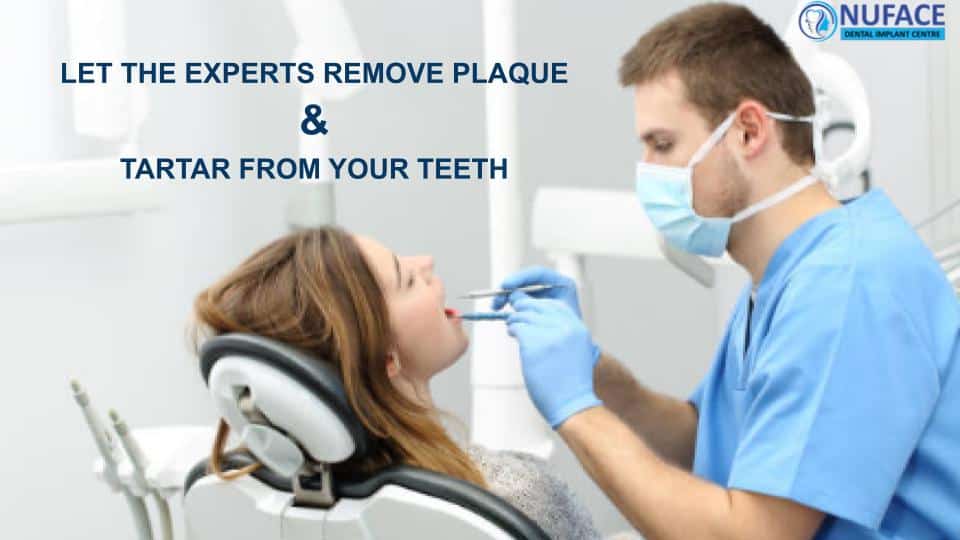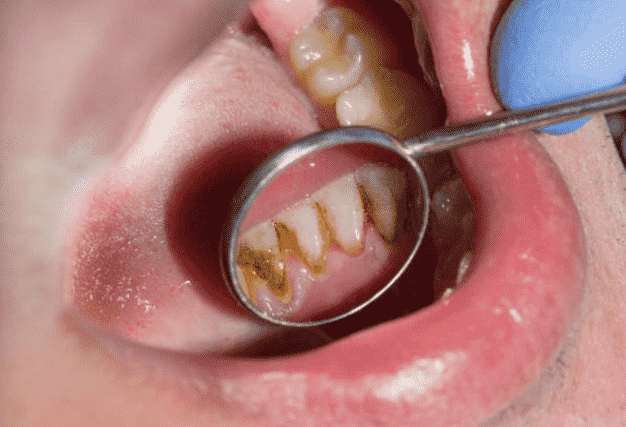
Dental plaque is a sticky layer that builds up on your teeth. Everyone gets plaque, but it’s important to get rid of it regularly to maintain good oral health. This can be done through routine dental cleanings and daily brushing and flossing. If left on your teeth, plaque can lead to problems like cavities, gingivitis, and other oral health issues.
A professional dental cleaning can remove both plaque and tartar from your teeth. However, you can also prevent tartar buildup and remove plaque at home by brushing your teeth thoroughly and flossing daily. Brushing and flossing regularly can help prevent the formation of plaque and tartar. However, tartar can be harder to remove and may require a visit to the dentist for a professional cleaning.

Dental plaque is a sticky film made of bacteria that sticks to your teeth. It’s something that naturally happens to everyone. However, if you don’t remove plaque by regularly cleaning your teeth at the dentist and brushing and flossing every day, it can lead to cavities, gum disease, and other problems with your oral health.
Tooth plaque is made up of bacteria, leftover food bits, and saliva. When you eat, the bacteria in your mouth munch on the food particles, especially sugars and carbohydrates. This process creates a sticky and acidic film known as dental plaque.
Plaque is actually transparent, so you can’t see it directly. However, it can make your teeth appear discolored because it traps food particles. When you have plaque on your teeth, they may feel “fuzzy” when you run your tongue over them. It’s like they’re wearing tiny sweaters, and that’s a sign of plaque.
Tartar is like hardened plaque. When you don’t remove plaque regularly, it becomes tartar. Unlike plaque, you can’t brush or floss tartar away by yourself. Only a dentist or hygienist can get rid of it. Dental Tartar is also called as dental calculus.
Tartar may start off as off-white or yellow. But over time, it can take on the color of the foods or substances you consume. For example, if you drink coffee, tea, or red wine, or if you smoke or chew tobacco, tartar can become darker.
If you don’t remove tartar along with plaque through regular dental cleanings, brushing, and flossing, it can lead to problems like cavities, gum disease, and other issues with your oral health.
Dental plaque can show these common signs:
– Your teeth feel fuzzy.
– You have persistent bad breath. ( Be sure to check out this informative article on how to eliminate bad breath permanently. It’s a must-read for anyone seeking fresh breath and renewed confidence!)
– When you clean your teeth, your gums get red, inflamed, and bleed.
Plaque on teeth is caused by bacteria in your mouth combining with sugary or starchy foods. When you eat things like milk, juice, soft drinks, bread, pasta, and fruit, these bacteria produce acids that break down the carbohydrates in the food and drinks. If you don’t brush your teeth right after eating or drinking, bacteria, acids, and carbohydrates come together to create a sticky, colorless layer called plaque.
If you don’t brush and floss regularly, plaque can turn into tartar, which only a dentist can remove. Severe dental plaque and tartar can lead to:
– Cavities (holes in your teeth).
– Gingivitis and other gum diseases.
– Infections in your teeth (abscessed tooth).
– Tooth loss (losing your teeth).
You can detect dental plaque by observing certain signs and symptoms. If your teeth feel rough or fuzzy when you run your tongue over them, or if you notice a sticky film on your teeth, it may indicate the presence of plaque. Additionally, persistent bad breath, swollen or red gums, and bleeding gums during brushing or flossing are common indicators of dental plaque. To be certain, it is recommended to consult a dentist at our dental clinic in Jalandhar. They can check your teeth and gums and give you advice on any treatment you might need.

Professional cleanings done periodically are effective in removing tartar buildup. Both traditional dentists and holistic dentists (who consider the overall health of the patient, not just oral health) can perform dental cleanings.
During the cleaning, your dentist or dental hygienist will use a handheld metal scaler, which has a hook-like end, to scrape off tartar. If you have a significant amount of tartar that has caused gum disease, your dentist may suggest a deep cleaning, known as scaling and root planing.
The process involves removing plaque and tartar from both above and below the gumline, especially in the pockets where the gum has detached from the tooth. The dentist will also smooth the roots of the teeth to promote the gum’s reattachment.
In some cases, a laser may be used to eliminate bacteria deep within a gum pocket.
Plaque can turn into tartar quickly, so it’s important to brush and floss every day. Here are some simple ways to take care of your teeth:
Remember, these natural remedies may not taste pleasant, but they can help maintain oral health.
The best way to prevent tartar and plaque is to have a good dental hygiene routine and visit the dentist regularly. But your diet also plays a big role in keeping them away.
To prevent plaque, it’s important to reduce the amount of sugar and starch in your diet. Bacteria in your mouth love sugary and starchy foods, and when they feed on these foods, they create plaque, which feels like fuzzy teeth.
Some of the foods that bacteria love are the ones we enjoy too! Sticky sweet treats and snacks that can get stuck between your teeth are the worst culprits. But you can reduce the risk of plaque by cutting down on or brushing after eating the following foods:
– Candy
– Ice cream
– Cakes and pies
– Dried fruit
– Potato chips
– Soft bread
Certain drinks can also contribute to plaque formation. Fizzy drinks, alcohol (as it can dry out your mouth), fruit juices, and high-carb sports drinks can all add to plaque build-up.
To reduce the risk of plaque and tartar buildup, limit your consumption of foods that contribute to plaque formation and follow a consistent oral care routine. But the most important thing you can do for your teeth is to have regular check-ups with a trusted dentist.
If you live in Jalandhar or nearby and you’re worried about plaque and tartar on your teeth, you can make an appointment with our experienced dental team at Nuface Dental Implant Center. Just call +919814009431 to schedule your appointment.